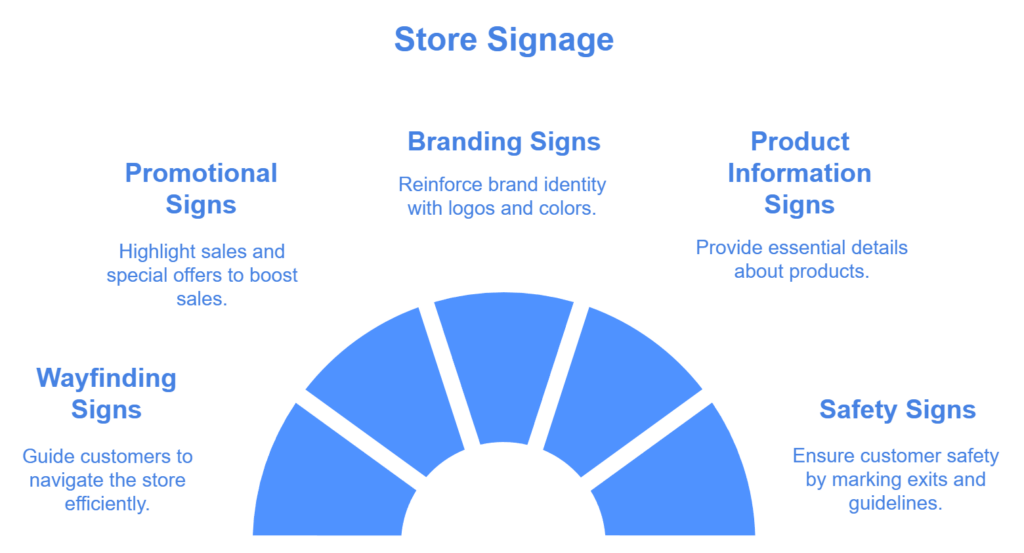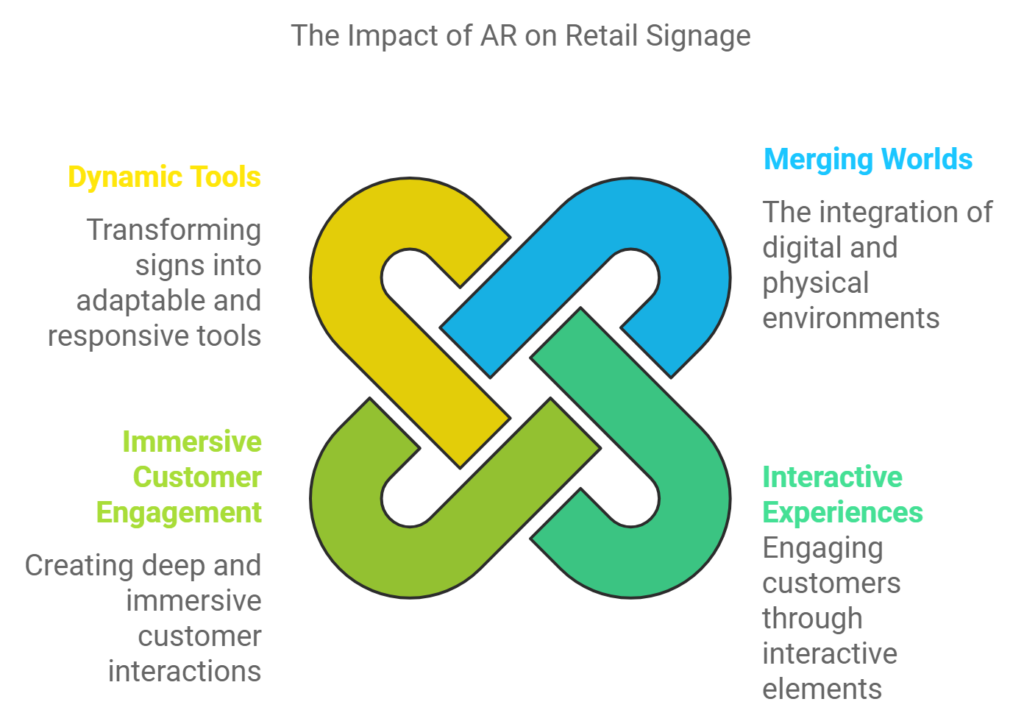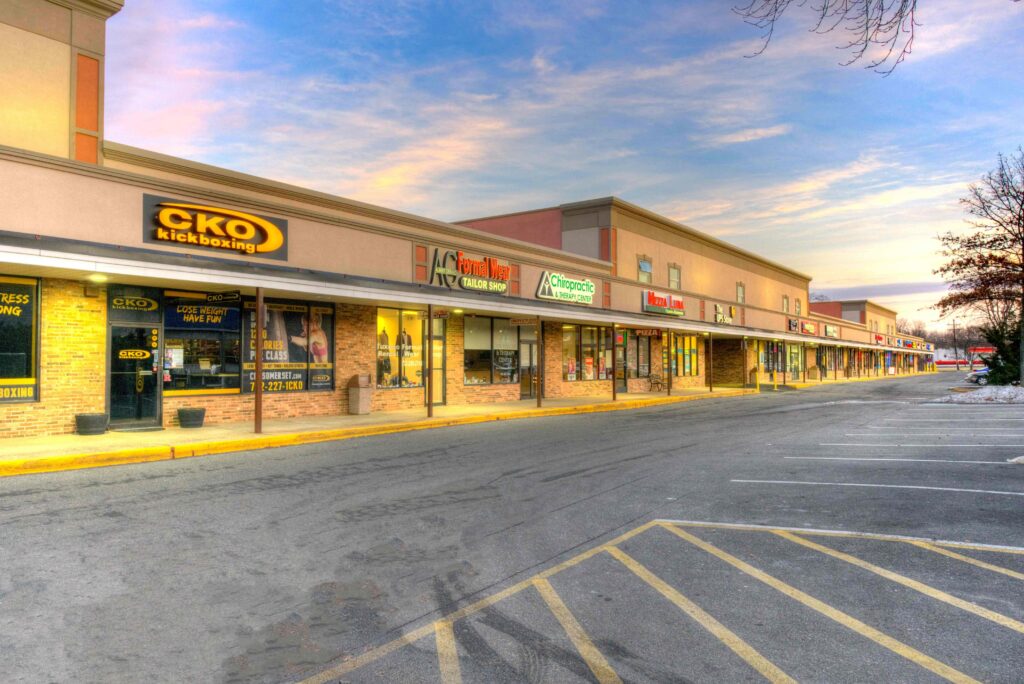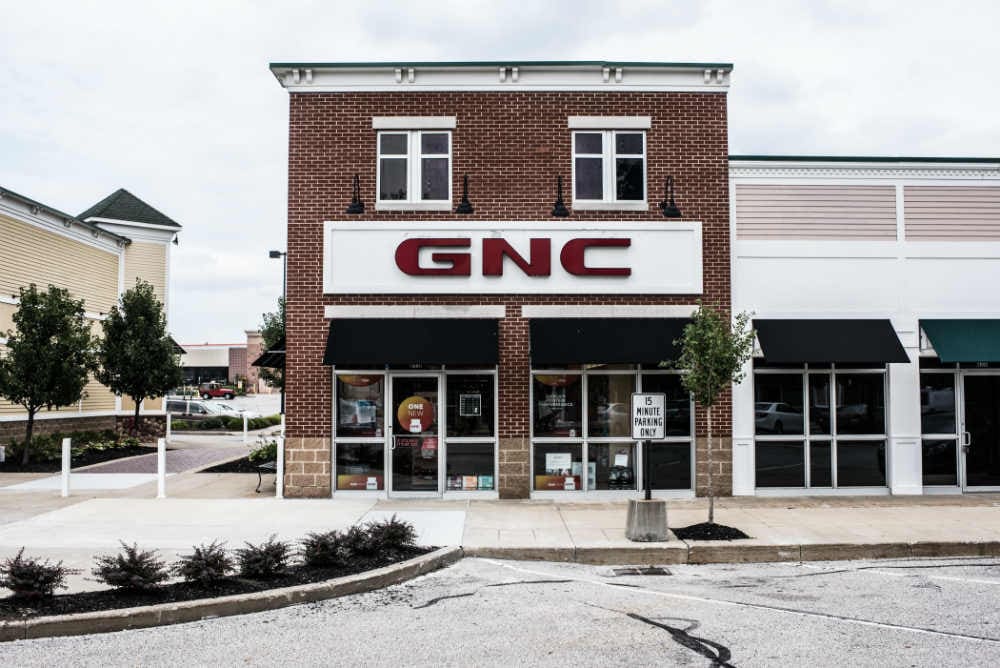
Retail Signage | Maximizing Brand Impact and Customer Engagement
Retail signage is crucial in maximizing brand visibility and enhancing customer engagement. It helps guide customers, promotes products, and reinforces a strong brand identity, ultimately driving sales and improving the shopping experience.
What is Retail Signage?
Retail signage refers to visual communication tools used in stores and shopping environments to attract attention, provide information, guide customers, and promote products.
Retail signage encompasses various visual elements designed to improve the customer experience, communicate brand messages, and drive purchasing decisions. Key types of retail signage include:
- Wayfinding signs: Help customers navigate the store and find specific sections, products, or services.
- Promotional signs: Advertise sales, discounts, or special offers to attract attention and increase sales.
- Branding signs: Reinforce brand identity with logos, colours, and slogans strategically placed throughout the store.
- Product information signs: Provide details about featured products, such as price, specifications, or special benefits.
- Safety signs: Ensure customer safety by highlighting emergency exits, health guidelines, or restricted areas.

Store signage
Why is Retail Signage Important?
Retail signage is fundamental to a store’s success, impacting both customer experience and overall sales. The benefits of effective retail signage include:
1. Increased Brand Visibility
Retail signage lets businesses prominently display their brand logo, colours, and identity. By consistently showcasing these elements throughout the store, retailers can strengthen brand recognition and leave a lasting impression on customers.
2. Enhanced Customer Experience
Clear and strategically placed signage helps customers easily navigate the store, reducing confusion and frustration. From wayfinding signs that direct customers to specific sections to promotional signage that highlights discounts, the right signage enhances the overall shopping experience.
3. Boosted Sales and Promotions
Promotional signage is one of the most effective tools for driving immediate sales. Signage can encourage impulse buying and increase overall revenue by highlighting discounts, seasonal offers, and product bundles.
4. Informed Purchasing Decisions
Product information signs give customers key product details, such as price, features, or special benefits. These signs guide customers toward informed decisions, reducing the need for staff intervention and improving the customer’s shopping experience.
5. Efficient Communication
Retail signage communicates essential information quickly and effectively. Whether it’s a sale announcement, store policy, or health and safety guidelines, signage ensures that customers are well-informed, reducing misunderstandings and enhancing store operations.
The Evolution of Retail Signage in Post-Pandemic Retail
The COVID-19 pandemic has fundamentally transformed the retail landscape, prompting significant changes in how businesses approach signage. Retail signage has evolved to prioritize safety, hygiene, and digital integration, ensuring customers feel secure and engaged during their shopping experience.
Enhanced Safety Signage: Post-pandemic, retailers have integrated safety-focused signage, such as floor markers for social distancing, hand sanitizer stations, and clear markings for one-way traffic flows. These signs comply with health guidelines and reassure customers about their safety in the store.
Contactless Interactions: Signage now incorporates QR codes and NFC (Near Field Communication) technology to facilitate contactless interactions. Customers can scan QR codes to access product information and promotions or place orders without touching physical surfaces, reducing the risk of virus transmission.
Digital Integration: The integration of digital signage has accelerated, allowing for real-time updates and dynamic content that can adapt to changing circumstances. Digital displays can highlight health protocols, announce store hours changes, and showcase live promotions, ensuring customers receive timely and relevant information.
Sustainable Practices: The pandemic has also heightened awareness of sustainability. Retailers opt for eco-friendly materials and energy-efficient lighting in their signage to align with green initiatives and meet customer expectations for environmentally responsible businesses.
Key Changes in Retail Signage Post-Pandemic
| Category | Pre-Pandemic Practices | Post-Pandemic Evolution | Impact on Retailers |
| Safety Signage | Minimal use, mainly for emergency exits and fire safety. | Enhanced focus on health and safety, including social distancing markers, hand sanitizer stations, and directional signs. | Increases customer confidence and compliance with health guidelines. |
| Digital Signage | Used for general promotional content and occasional real-time updates. | Real-time updates for store hours, health protocols, and promotions with dynamic content adaptability. | Improves customer engagement with timely information and safety compliance. |
| Contactless Interactions | Limited use of QR codes, mainly for promotions. | Widespread use of QR codes and NFC for contactless browsing, ordering, and payments. | Reduces touchpoints, enhances customer convenience, and reduces virus transmission risks. |
| Sustainability | Energy efficiency was considered but not a primary focus for signage. | Increasing focus on eco-friendly materials, energy-efficient LEDs, and recyclable components. | Aligns with customer expectations for sustainable practices, reducing the retailer’s environmental footprint. |
| Personalization | Generic promotions and messaging aimed at broad audiences. | Personalized messaging using customer data to deliver relevant offers based on behaviour and purchase history. | Increases customer satisfaction and encourages loyalty through tailored experiences. |
| Interactive Elements | Limited interactivity, mainly via static displays or simple video loops. | Integration of augmented reality (AR) and gamified signage to engage customers interactively. | Enhances customer experience by encouraging participation and increasing dwell time in-store. |
Innovative Applications of Augmented Reality (AR) in Retail Signage
Augmented Reality (AR) is revolutionizing retail signage by merging the physical and digital worlds, creating interactive and immersive customer experiences. AR-powered signage transforms traditional signs into dynamic tools that engage customers on a deeper level.
Interactive Product Displays: AR signage allows customers to interact with products virtually. For instance, scanning a sign with a smartphone can reveal 3D models of products, provide detailed information, or show the product in use, enhancing the decision-making process.
Virtual Try-Ons: Retailers can use AR signage to offer virtual try-on experiences for apparel, accessories, or cosmetics. Customers can see how products look on them without physically trying them on, increasing convenience and reducing inventory handling.
In-Store Navigation: AR wayfinding signs guide customers through large stores or complex layouts by overlaying directional arrows and information on their mobile screens. This technology simplifies navigation, making the shopping experience more efficient and enjoyable.
Gamification and Engagement: AR signage can incorporate gamified elements, such as treasure hunts or interactive games, to engage customers and encourage them to explore different store sections. This enhances customer interaction and increases dwell time and potential sales.
Personalized Experiences: AR signage can deliver customized content and recommendations by leveraging customer data. For example, returning customers can receive tailored offers or product suggestions based on previous purchases, creating a more personalized shopping journey.

The impact of AR in retail signage explained
Multi-location Retail Branding with Consistent Signage

Cabinets and Granites direct 2
Maintaining a consistent brand identity across all stores is crucial for building brand recognition and trust for businesses with multiple locations. Consistent retail signage ensures that customers receive a uniform experience, regardless of the store they visit.
Standardized Design Templates: Utilizing standardized design templates for signage ensures uniformity in colour schemes, fonts, and logo placement across all locations. This consistency reinforces brand identity and makes the brand easily recognizable.
Centralized Design Management: Implementing centralized design management systems allows retailers to oversee and update signage designs from a single location. This ensures that all stores adhere to the latest branding guidelines and promotional campaigns.
Localized Customization: Signage can be customized to reflect local preferences and cultural nuances while maintaining consistency. For example, incorporating local landmarks or culturally relevant imagery can make signage more relatable to the community without compromising the brand’s core identity.
Quality Control: Establishing strict quality control measures ensures that all signage meets the brand’s materials, installation, and presentation standards. Regular audits and feedback mechanisms help identify and rectify inconsistencies across different locations.
Scalable Solutions: Investing in scalable signage solutions, such as modular displays and interchangeable components, allows retailers to expand their branding efforts as they open new stores efficiently. This flexibility supports growth while maintaining a cohesive brand image.
The Role of Geofencing in Retail Signage Marketing

industry-signage-by-blinksigns
Geofencing technology enhances the effectiveness of retail signage by enabling location-based marketing strategies. By setting up virtual boundaries around physical locations, retailers can deliver targeted messages to customers’ mobile devices when they enter these zones.
- Targeted Promotions: Geofencing allows retailers to send personalized promotions and discounts to customers near their stores. For example, a customer walking by a retail store can receive a push notification about a limited-time offer, encouraging immediate visits and purchases.
- Event-Based Marketing: During special events or store openings, geofencing can alert nearby customers about exclusive deals or event-specific signage. This increases event participation and drives traffic to the store.
- Customer Engagement: Geofencing can be integrated with digital signage to create synchronized marketing campaigns. For instance, when a customer enters a geofenced area, digital signs inside the store can display personalized welcome messages or product recommendations based on the customer’s location and preferences.
- Data Collection and Insights: Geofencing provides valuable data on customer behaviour and foot traffic patterns. Retailers can analyze this data to optimize signage placement, improve marketing strategies, and enhance customer experience.
- Enhanced Loyalty Programs: By combining geofencing with loyalty programs, retailers can reward customers for their proximity and frequent visits. For example, customers can receive loyalty points or exclusive offers when detected within the geofenced area, fostering loyalty and repeat business.
Optimizing Customer Flow with Smart Wayfinding Signage
Smart wayfinding signage is essential for optimizing customer flow within retail environments, especially in large stores or complex layouts. By guiding customers efficiently through the store, retailers can enhance the shopping experience and increase product exposure.
Dynamic Path Optimization: Smart wayfinding systems use real-time data to adjust navigation paths based on customer movement and store layout changes. This ensures that customers can easily find products without experiencing congestion or confusion.
Integration with Mobile Apps: Linking wayfinding signage with mobile apps allows customers to receive personalized smartphone navigation instructions. This integration can include voice-guided directions, product location highlights, and interactive maps, enhancing the convenience and accessibility of the shopping experience.
Heat Mapping and Traffic Analysis: Utilizing heat mapping technology, smart wayfinding signage can analyze customer movement patterns and identify high-traffic areas. Retailers can use this information to strategically place promotional displays and optimize store layout for better traffic flow and increased sales.
Visual and Digital Signage Combination: Combining visual signage with digital displays provides multiple channels for guiding customers. Digital screens can display dynamic instructions and updates, while traditional signs offer clear and direct navigation cues, ensuring that all customers receive the necessary guidance regardless of their preferred medium.
Accessibility Features: Smart wayfinding signage includes features that cater to customers with disabilities, such as audio instructions for the visually impaired and clear, high-contrast visuals for better readability. Ensuring accessibility enhances the store’s inclusivity and improves the overall customer experience for all visitors.
Energy-Efficient LED Signage for Sustainable Retail Practices
Sustainability is a growing priority for retailers, and energy-efficient LED signage offers an eco-friendly solution that aligns with green initiatives while providing high visibility and flexibility.
- Lower Energy Consumption: LED signage consumes significantly less energy than traditional lighting options. This reduction in energy usage lowers operational costs and minimizes the store’s carbon footprint, contributing to environmental sustainability.
- Longer Lifespan: LED signs have a longer lifespan than conventional signs, reducing the need for frequent replacements and lowering maintenance costs. This durability makes LED signage cost-effective and sustainable for long-term retail operations.
- Versatile Design Options: LED technology allows for versatile design options, including dynamic displays, colour-changing lights, and customizable content. Retailers can easily update their signage to reflect seasonal promotions, new product launches, or branding changes without investing in new materials.
- Reduced Waste: LED signage helps reduce waste in retail environments by minimizing the need for frequent sign replacements and using recyclable materials. Many LED components are also designed for easy disassembly and recycling, further supporting sustainable practices.
- Enhanced Visibility: LED signs offer superior brightness and clarity, ensuring that promotional messages and branding elements are highly visible during the day and at night. This enhanced visibility attracts more customers and increases brand exposure without compromising energy efficiency.
- Smart LED Signage: Integrating innovative technology with LED signage enables features such as remote management, real-time content updates, and automated energy-saving modes. Retailers can control their signage through centralized systems, optimizing energy usage and ensuring signs are only active when needed.
Take Your Retail Signage to the Next Level with BlinkSigns

GNC signage by blinksigns
Ready to transform your retail space with personalized digital signage? At BlinkSigns, we specialize in creating cutting-edge signage solutions that captivate and engage your customers. From real-time dynamic displays to customized content that speaks directly to your audience, we’re here to help you maximize your brand impact and drive sales.
Let’s bring your vision to life. Contact us today to get started on your next project! Call us at +1-877-433-4466 to discuss how our team of professionals can enhance your retail experience through innovative, data-driven signage solutions.